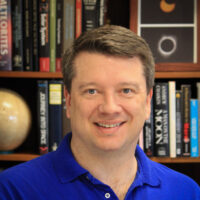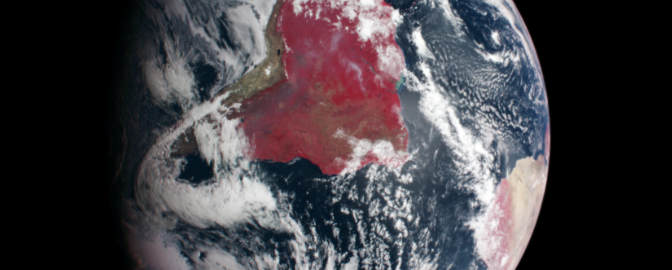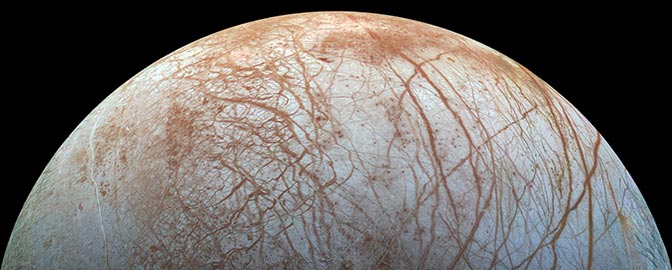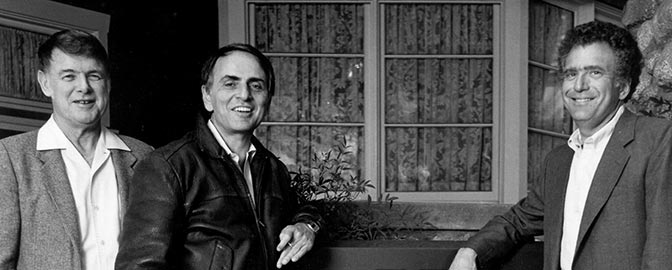Updates from our asteroid-hunting Shoemaker NEO Grant winners

Written by
Bruce Betts, PhD
Chief Scientist / LightSail Program Manager, The Planetary Society
June 24, 2025
Every two years, The Planetary Society awards Shoemaker grants to very advanced amateur astronomers so they can upgrade their already-impressive observatory facilities and make even more significant contributions to protecting Earth from asteroid impacts. These award-winners make critical observations, from characterizing and following up on recently-discovered asteroids to discovering new ones themselves.
Thanks to Planetary Society members and donors who have supported this program over the past 28 years, Shoemaker Grants have made a real difference in protecting humanity from catastrophe.
I asked our past Gene Shoemaker Near Earth Object (NEO) Grant winners for updates on their observing programs. Below are excerpts from some in their own words.
Andrea Soffiantini, Italy, Serafino Zani Observatory
"Thanks to the support of the Shoemaker NEO Grant, the Serafino Zani Observatory has significantly improved its capacity to detect and track challenging Near-Earth Objects. Over the past 12 months, despite a climatically unfortunate season, we obtained astrometric measurements for 418 minor planets, including particularly faint and fast-moving targets. Of these, 290 were non-main belt objects. The image [below] shows a single 30s frame of 2025 FR13, observed on March 30th, 2025 — just four days after its discovery — moving at about 128”/min. Achievements like this would not have been possible with our previous equipment and workflow. We sincerely thank The Planetary Society for supporting our work. The Shoemaker NEO Grant has had a clear and lasting impact on our observational capabilities, and we remain fully engaged in contributing to the effort to track and follow up near-Earth objects."

Cristóvão Jacques, Brazil, SONEAR Observatory
"Over the past years, our NEO observing program has remained focused on follow-up and initial characterization of newly discovered Near-Earth Objects, particularly those flagged on the NEOCP. Thanks to the Shoemaker NEO Grant awarded in 2021, we were able to acquire a high-efficiency CMOS camera and a dedicated GPU, which significantly improved our telescope's automation and responsiveness to fast-moving and faint targets. This allowed us to substantially increase our contribution to the global follow-up effort. In fact, our team contributed hundreds of precise astrometric positions to the MPC, including critical follow-up of several potential impactors."

Fabrizio Bernardi, Italy, Beppe Forti Observatory
"Our primary focus remained on the systematic observation of asteroids, with a particular emphasis on Near-Earth Objects (NEOs) and other bodies of scientific interest. A total of 901 of our observational reports were published as Minor Planet Electronic Circulars. We successfully secured and submitted 4,593 individual astrometric measurements of asteroids. This work is fundamental for predicting their future paths, assessing potential impact risks, and identifying targets for future space missions. [Also,] our observatory played a key role in the confirmation of eight new cometary discoveries."

Gary Hug, USA, Kansas, Farpoint Observatory
[The Catalina Sky Survey (CSS) discovered the very small asteroid 2022 WJ1 that harmlessly impacted the Earth hours after discovery. Their website reported:] "Independent observations included those submitted by a vigilant and experienced group of amateur astronomers at Farpoint Observatory, located in Eskridge, Kansas. Inclusion of their observations allowed for sufficient parallax from the discovery location to markedly constrain the trajectory of the impactor and narrow down the impact location."
"Another improvement for remotely accessing the [0.7-meter] Tombaugh Telescope was manufactured by Russ Valentine (our IT engineer) and me for remotely collimating the primary mirror. The device can independently adjust each of the three collimation adjustment screws to the primary mirror through geared stepper motors over the internet."

Korado Korlević, Croatia
"The program is continuing. Unfortunately, the weather this spring is the worst in the last seven years. We started testing a small robotic observatory, telescope, and shelter to install on a possible good astro climate site on the island of Lastovo. Hopefully in September the testing is over and we can move the telescope there."
Luca Buzzi, Italy, Osservatorio Astronomico Schiaparelli
"We observed two Earth impactors, 2023 CX1 and 2024 BX1, both discovered by Krisztián Sárneczky ok[sic] Konkoly Observatory (Hungary). Especially for 2024 BX1, my images revealed the fastest spinning asteroid (2.59s) known at that time and together with ESA we published a paper on[sic] Astronomy & Astrophysics. Moreover, we were able to observe 2024 YR4 (which had an impact rating of 3 on the Torino scale) on two occasions. In the last one, on 2025 Feb. 2nd, we were able to detect it at mag. 23.1 (!) with four hours of exposure time. It was the faintest asteroid ever observed at Schiaparelli Observatory! This was possible also thanks to the 2015 Shoemaker NEO grant."

Marian Urbanik, Slovakia, Kysuce Observatory
"Throughout 2024, I have been actively involved in the observation and follow-up astrometry of small Solar System bodies. Many follow-up measurements were conducted shortly after discovery to extend short observational arcs and avoid object loss. The 2024 and 2025 campaign was highly productive, with over two thousand observations and a significant number of contributions to the tracking of newly discovered Solar System bodies. I remain committed to supporting international collaboration in planetary science through timely, accurate astrometric data and the ongoing development of observational capacity at Kysuce Observatory."
Marian Urbanik also took observations of the newly discovered interstellar comet 3I/ATLAS in July, contributing to the effort to accurately determine its orbit.
Massimo Calabresi, Italy, Virginio Cesarini Observatory
"The Virginio Cesarini Observatory in Frasso Sabino (Rieti-Italy) managed by the Roman Amateur Astronomers Association (ARA), winner of the Shoemaker Neo Grant in 2021, has fully resumed its observation activities in the field of the NEOs, comets, asteroids astrometric observations, variable stars photometry and exoplanets transits after the renovation works completed in summer 2024. In particular, in the last few months we have discovered the cometary activity of 4 asteroids. For comets P/2015 CD60 and C/2024 PN7 we were the first to discover the cometary activity and for the others we are co-discoverers. The observation of cometary activity on asteroids and NEOs is not accidental but the result of a research program we have developed. In parallel our activity to realize the remote control of the telescope goes on."
Russ Durkee, USA, Texas operated from Minnesota, Shed of Science Observatory
"My observing program at the Shed of Science has continued as I work with Petr Pravec's Binary Asteroid Survey project. We have continued to work on new and previously known binaries. I am using the excellent camera from my previous Shoemaker grant. Some notable projects this year include observations of the Jupiter Trojan binary 617 Patroclus-Menoetius in support of NASA's Lucy fly-by mission in 2033. I have also been mentoring a high school student who created software to simulate binary asteroid systems so that a simulated systems light curve can be compared to actual light curve observations."
Breakthrough research starts with YOU!
Your support will empower the next round of STEP grant winners. Make your gift today to fund tomorrow's promising science and technology projects.
Donate

 Explore Worlds
Explore Worlds Find Life
Find Life Defend Earth
Defend Earth

